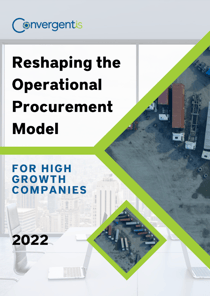Spot buys are often brought on as a spur-of-the-moment decision when sourcing teams are required to fulfill an order quickly. As a result, according to Ardent Partners, for every dollar spent off-contract, there is an average loss of between 12% and 18% to the enterprise. Although many systems are often put into place to limit the number of spot buys that must occur, these one-off buys aren’t something that can be avoided one hundred percent of the time, and they can even be beneficial in some cases.
Some of these beneficial use cases include:
-
Emergency purchases to fill an immediate need
-
Inexpensive purchases
-
Transactions that aren’t complex
-
Unique or one-off purchases
-
Purchases that are part of a spending category that is not managed
-
Initial engagement with a potential new supplier
Therefore, issuing a spot buy in times of need may still be more profitable than failing to meet a production goal and may save businesses from entering an engagement with a supplier who doesn’t deliver on time. To maximize cost savings, businesses must consider the frequency in which they conduct spot buys since they can be more costly over time.
Below, we outline the differences between a spot buy and contract spend and when to use each to maximize cost savings.
Spot Buy vs. Contract Spend
Within the organization, there are typically two types of purchasing: spot buys and on-contract buys.
Businesses will often recognize spot buys for their short expiration window. Their rates can also change drastically depending on the market conditions. Since the price will fluctuate, purchasing using only this strategy isn’t profitable long-term.
In comparison, contract quotes are often longer-term agreements that businesses make to hedge against rising prices. These agreements are often made along with a long-term analysis of demand and can be especially advantageous when multiple shipments are needed to fulfill a single order.
For these reasons, businesses must learn to find the best balance of spot buys and on-contract spend. As a business grows and new suppliers are needed, spot buys tend to be advantageous since they allow a buyer to engage with a new supplier and understand the costs and procedures they operate with. In contrast, contract quotes are difficult to arrange for new lines of business, since they require more time to set up and a steady, long-term process. Therefore, your team might use a combination of both in periods of growth.
Common Business Challenges
The major concern is that when obtaining spot buys, many businesses are not aware of all the risks, such as a mismatch of quality or inaccurate delivery standards, that may cost the business more than anticipated.
Therefore, supervising this class of spend with the same attention to detail as contract spend can introduce many cost-savings opportunities, especially since spot buys often go unnoticed by procurement departments.
Tony Alvarez, a General Manager at SAP Ariba, shares this is largely because “procurement lacks effective tools to facilitate the time-sensitive supplier identification, qualification, and bidding necessary to secure them,” this means “many competitors are leaving significant savings on the table.”
Currently, items purchased off-contract are often subject to long processing times, many manual processes, and complicated user experience. Therefore, to achieve cost savings for spot buys businesses must consider strategies for negotiating better prices and managing their processes with a greater level of detail.
Influence Better Pricing
To get the best pricing, it is recommended that businesses begin by first reaching out to suppliers they have an existing contract with. Although this is not possible in all cases, it can help influence slightly better pricing than would be given engaging with a new supplier. As a secondary recommendation, businesses are encouraged to call out volume as a part of their strategy to negotiate better rates. Oftentimes, smaller supply orders will require the same transportation costs, so maximizing the use of space may result in a better deal overall.
The final area that is worth considering is identifying the best software to support your business goals. Like other supplier management tools, spot buy capabilities may help to enable real-time acceptance and responses to suppliers and enable you to contact multiple parties through a single platform. Specialized software will allow users to compare suppliers side by side, and even examine their delivery reliability. Even when the timing is limited, it is important to consider the providers’ strengths and weaknesses including their ability to meet service requirements, the ease with which your team can do business with them, if they have tech tools to communicate efficiently, and the ability to take action quickly if things go awry.
Learn How to Manage Spot Buys More Accurately
In addition to recognizing that both spot buys and strategic sourcing will be required from time to time, some typical complexities often arise in the process. Processing and tracking these payments may require manual interventions to process these transactions, and the associated internal costs may also increase. That said, the right combination of tools is often recommended to get the best of both scenarios.
The spot buys capability is currently available through SAP Ariba Buying and Invoicing and the SAP Ariba Catalog. The tool is designed to simplify one-off and emergency purchases that would otherwise be too expensive or time-consuming to source. Unfortunately, what many teams still have difficulty implementing a catalogue is only one part of the business rules that help guide these solutions. Spot buys are part of the greater tail spend challenge, along with maverick spend and unclassified purchases.
The ConvergentIS team can help organizations develop the business rules for these processes through design thinking. We support the implementation of an end-to-end process that automatically accepts and rejects decisions based on these rules and only alerts team members of the exceptions. Indirect procurement packages leverage a variety of SAP BTP applications that can be leveraged on SAP S/4HANA or SAP ECC. Among them is the ConvergentIS Simplified Requisitioning application, which can allow internal team members to initiate a spot buy based on a list of existing suppliers.
Businesses can integrate their ERP system and procurement processes and configure them to match their unique set of business rules.
For more information about how your team can improve your indirect procurement process, we encourage you to download our free guide below.


